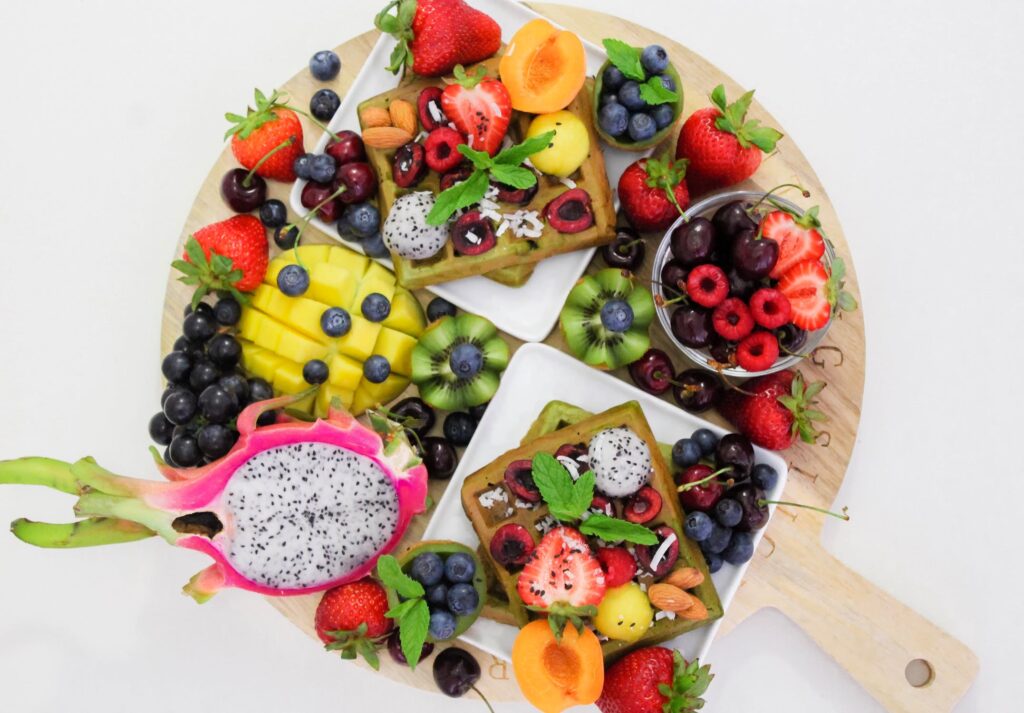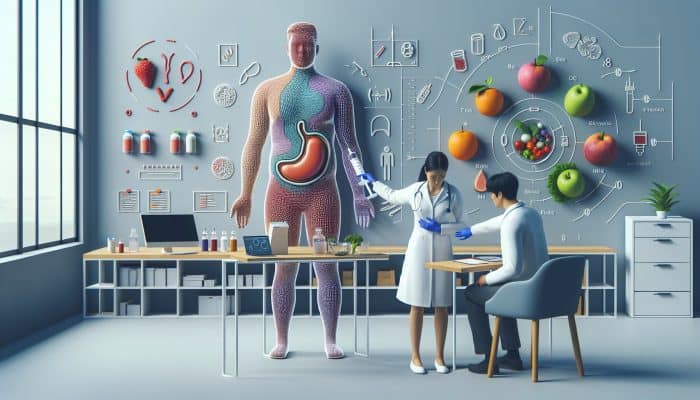Food & Drinks to Eat or Avoid to Keep Your Blood Sugar Level in Check
If you have diabetes, you are aware that the foods you consume directly influence your blood sugar levels. That's why eating meals and regulating your blood sugar are critical. What you eat is just as important as how much you consume regarding blood sugar. You may assist keeping your blood sugar levels in line by making wise dietary selections from all food categories. Carbohydrate-rich meals and snacks can induce blood sugar spikes; therefore, picking low-carbohydrate items is vital. However, you do not need to avoid carbs entirely; simply couple them with protein-rich meals or healthy fats to help decrease the absorption of sugar into your system (1).
We've all had that feeling: you've just finished a packet of cookies or a quart of ice cream, and your energy levels have skyrocketed. But then, just as swiftly, you collapse. You feel lethargic, irritated, and maybe nauseated. Your blood sugar levels are to blame for this roller coaster journey. When you consume refined sugar, your blood sugar levels skyrocket. This provides you with a rush of energy, but it is fleeting. Your blood sugar levels will soon plummet, leaving you weary and drained. The easiest method to avoid these peaks and troughs is to keep your blood sugar levels stable by limiting your intake of processed sweets.
To determine which foods contain refined sugar, remember that sugar occurs in various forms, so read labels carefully. If you see any of the following, avoid them: Sucrose, fructose, maltose, dextrose, syrup, sorbitol, or maltodextrin are all examples of sugars. Carbohydrates labeled “brown” are generally healthier for humans. This, however, does not apply to sugar. Brown sugar is somewhat less processed than white sugar, but it still spikes blood sugar just as quickly (2).
Avoiding sweet items including candies, cookies, cakes, and ice cream. However, some items (and I use that word deliberately since they are processed) marketed as healthy include a lot of hidden refined sugar. Fruit-flavored yoghurts, granola, breakfast bars, and fruit leathers are among them. Fruit leathers are dried fruit strips. They're chewy, as you'd expect from leather! However, the fact that they include fruit does not imply that they are healthy.
They may appear healthy on the nutrition label, but when you look at the quantity of sugar, they are frequently 37% sugar content or more, coupled with artificial additives such as binders, preservatives, and emulsifiers (3). These high-sugar goods should be avoided by everyone, but especially by people with diabetes or attempting to reverse prediabetes. Consuming a lot of refined sugar can cause insulin resistance, which is a symptom of type 2 diabetes (4). Refined sugar is also linked to inflammation (5) and weight gain. Furthermore, processed sugars supply relatively little nourishment.
Eating entire fruit is significantly healthier and does not cause blood sugar spikes. Rather than putting candies into your mouth, consider fruit. They have a wonderful flavor and are high in fiber and antioxidants. Berries, such as blueberries, raspberries, strawberries, blackberries, and cranberries, have also been shown to help with blood sugar management and insulin sensitivity (6).

Avoid processed breakfast cereals:
Breakfast meals are not all made equal. Breakfast cereals, for example, can significantly influence blood sugar levels. Not in a nice manner, either! When we consume cereal, especially puffed or flaked cereals, the carbs are quickly converted into sugar, causing blood sugar levels to rise. If you want to consume this sort of cereal for the morning, add some berries and maybe a few almonds. This will slow the rate at which blood sugar levels rise. Don't be lured by cereals containing dried fruit that claim to be healthy since the sugar in dried fruit is more concentrated. Fresh is always preferable.
Diabetics should choose whole grain cereals when purchasing processed breakfast cereals. Wheat-based choices have the lowest sugar content. Cereals like muesli and Allbran are not to be trusted. These can already contain up to 18% sugar, with many putting even more sugar on top. Granola is considerably worse, with around 28% sugar (7).
It should come as no surprise that porridge is the greatest morning cereal option since it has the most fibre and the least amount of sugar. So, if at all feasible, choose this adaptable breakfast. It may be served hot in the winter, while in the summer, it can be soaked overnight in yoghurt (8).
Avoid processed foods
Fruit yoghurts: Yogurt is another item that is frequently offered with breakfast. However, much like cereal, some might cause your blood sugar to jump faster than others. ‘Fruit' yoghurts are flavored with sweetened fruit syrups, and any fruit included is dried, meaning the sugar is more concentrated. Diabetics should avoid them because of this. Avoid those with ‘toppings' since they are heavy in sugar and will negate any advantages of the yoghurt (9).
White carbohydrates:
White rice, pasta, and bread are unquestionably mainstays in many people's meals. However, when it comes to blood sugar control, whole grain selections are often preferable. Brown rice retains the outer bran layer and germ, which means it retains all of the fibre, vitamins, and minerals lost during the manufacturing process of white rice. This implies it has a lower glycemic index than white rice (10) and will not cause blood sugar levels to increase as significantly. Whole wheat pasta and bread are also richer in fiber than white pasta and bread (11), and fiber can aid decrease the absorption of sugar into circulation. So, if you want to keep your blood sugar under control, choose whole-grain foods like brown rice, whole wheat pasta, and seeded bread.
Diabetics should avoid other bread products such as croissants, brioche, and pastries in addition to switching from white bread to brown bread. These are not only high on the glycemic index (12) but also rich in sugar and “bad” lipids like saturated fat and trans fats (13) that are detrimental to your health. Trans fats have been treated to extend their shelf life. They've been linked to an increased risk of diabetes, cardiovascular disease, and high cholesterol (14). Research that followed over 80,000 women for sixteen years discovered that eating trans fats raises the risk of diabetes by 40%. (15).
Crisps and snacks:
Snacks are an important element of many people's diets. We spend over 31 billion dollars yearly on them globally (16). However, it is critical to make sensible choices when it comes to blood sugar levels. Fried potato chips, savory snacks, and popcorn, which we can't seem to stop eating, are not only heavy in salt and fat, but they can also induce blood sugar surges (17). When it comes to blood sugar, foods heavy in protein and fiber, such as nuts or seeds, are the best. These foods assist in controlling blood sugar levels and deliver long-lasting energy.
If you absolutely must have a processed snack, choose baked rather than fried potato chips, air-popped snacks, or rice snacks with less fat and salt. They will, however, cause a surge in your blood sugar (17). Ideally, while trying to control your blood sugar levels, grab a handful of nuts instead. Better still, wait until your next meal and load up on fiber and protein to avoid snacking in between meals.
Limit your intake of saturated fats:
Saturated fats may be found in red meat, processed meats like bacon, burgers, and sausages, as well as butter, coconut oil, and cream, to mention a few (18). These fats can cause high cholesterol (18) as well as heart disease (19). Furthermore, saturated fat can promote insulin resistance in muscle cells, leading to diabetes (20). This is due to the fact that fat hardens the outer skin of the cells, making it difficult for glucose to get through and be used for energy (21).
While this post has primarily focused on items to avoid, you may be asking what you may truly consume if you have diabetes or prediabetes. There is plenty of lean meat, white and oily fish, fruit, vegetables, pulses, and legumes to select from. And remember that there's no reason why you can't enjoy these high carbohydrates, processed meals in moderation every now and then. Just keep in mind that they should be considered an infrequent treat rather than something you may consume on a regular basis.
References
- Eat Balanced by Pairing Your Carbs with Protein https://mghdiabeteseducation.com/2018/03/15/eat-balanced-by-pairing-your-carbs-with-protein/
- The different names for sugar https://www.bhf.org.uk/informationsupport/heart-matters-magazine/nutrition/sugar-salt-and-fat/names-for-sugar-infographic/different-names-for-sugar
- Kellogg's Fruit Winders Strawberry 5X17g https://www.tesco.com/groceries/en-GB/products/309188051
- Per capita sugar consumption and prevalence of diabetes mellitus – global and regional associations https://www.ncbi.nlm.nih.gov/pmc/articles/PMC3936705/
- Relation between a diet with a high glycemic load and plasma concentrations of high-sensitivity C-reactive protein in middle-aged women https://academic.oup.com/ajcn/article/75/3/492/4689341
- Dietary berries, insulin resistance and type 2 diabetes: an overview of human feeding trials https://www.ncbi.nlm.nih.gov/pmc/articles/PMC7202899/
- Breakfast cereals https://www.diabetes.org.uk/guide-to-diabetes/enjoy-food/eating-with-diabetes/diabetes-food-myths/breakfast-cereals
- Breakfast cereals ranked best to worst https://www.bhf.org.uk/informationsupport/heart-matters-magazine/nutrition/breakfast-cereals-ranked-best-to-worst
- Healthiest yogurts: The healthiest yogurt brand and worst revealed https://www.goodto.com/wellbeing/yogurt-best-and-worst-for-diet-30927
- White Rice vs Brown Rice Glycemic Index https://www.thediabetescouncil.com/white-rice-vs-brown-rice-glycemic-index/
- Carbohydrates and Blood Sugar https://www.hsph.harvard.edu/nutritionsource/carbohydrates/carbohydrates-and-blood-sugar/
- Glycemic Index (GI) & Glycemic Load (GL) Guide Croissant https://glycemic-index.net/croissant/
- Test Found Croissants and Pastries Relatively High in Trans Fats https://www.consumer.org.hk/en/press-release/20121214-1
- Trans fatty acids and coronary heart disease https://www.ncbi.nlm.nih.gov/pmc/articles/PMC1523500/
- Diet, lifestyle, and the risk of type 2 diabetes mellitus in women https://www.nejm.org/doi/full/10.1056/nejmoa010492
- $31.2 Billion Potato Chips Market – Global Industry Trends, Share, Size, Growth, Opportunity and Forecast 2021-2026 https://www.businesswire.com/news/home/20210422005498/en/31.2-Billion-Potato-Chips-Market—Global-Industry-Trends-Share-Size-Growth-Opportunity-and-Forecast-2021-2026—ResearchAndMarkets.com
- Crisps https://www.diabetes.org.uk/guide-to-diabetes/enjoy-food/eating-with-diabetes/diabetes-food-myths/crisps
- Saturated fat https://www.heartuk.org.uk/low-cholesterol-foods/saturated-fat
- Saturated Fatty Acids and Risk of Coronary Heart Disease: Modulation by Replacement Nutrients https://www.ncbi.nlm.nih.gov/pmc/articles/PMC2943062/
- Lipotoxicity: How Saturated Fat Raises Blood Sugar https://nutritionfacts.org/video/lipotoxicity-how-saturated-fat-raises-blood-sugar/
- Deleterious effects of lard-enriched diet on tissues fatty acids composition and hypothalamic insulin actions http://repository.londonmet.ac.uk/849/1/High_saturated_fat_diet_impairs_insulin_induced_hypophagia.pdf
The post Foods and Drinks to Eat or Avoid to Maintain a Healthy Blood Sugar Level appeared first on https://gqcentral.co.uk














